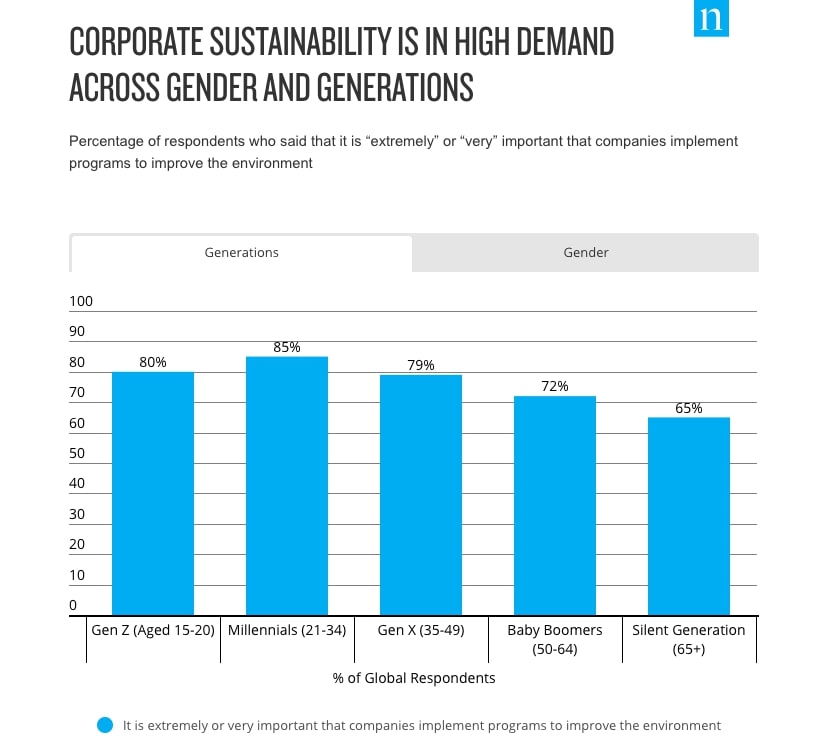“The future of fashion is circular. It has to be”, says Stella McCartney, the British fashion designer who some have labeled the ‘Queen of sustainable fashion’, and she’s probably right.
Currently, an entire garbage truck full of clothes is burned or dumped in a landfill every second, as 85% of textiles produced worldwide end up in landfills each year. Clearly this is something that cannot continue forever, and encouragingly, things have already started to change.
Multiple studies have shown that consumers are becoming more eco-conscious, and the idea of ‘circular fashion’ is growing in popularity. So, if you’re an emerging fashion brand with your eye on a sustainable future, achieving ‘circularity’ is something you might have already thought about.

But what does circular fashion really mean? And how can you make your own fashion business more circular?
Basically, circular fashion is about developing a process where the garments you create make the world a little better. This involves considering every aspect of your production cycle, from design and materials sourcing to the post-purchase care you offer.
In this post, we will discuss the important things to consider for incorporating circularity throughout your business, and offer practical tips for making your fashion brand a sustainable brand of the future!
1. Design for the Circle
The best way to make sure things run as smoothly as possible on your journey towards circularity is to embrace ‘circular design’ from the very beginning.
Circular design is about ‘designing out waste and pollution’, and the Ellen McArthur Foundation, a prominent circular economy focused not-for-profit, proposes four key stages in the process.
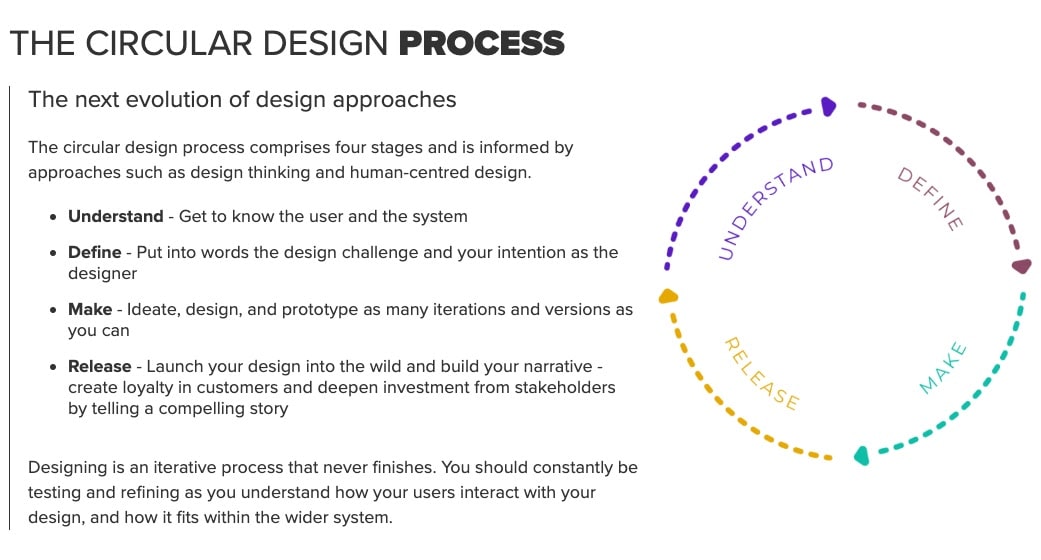
By understanding exactly how your customers use your products, how they currently dispose of them, and also how they might prefer to dispose of them given the opportunity, you can design your products to work with consumer needs and the environment together.
There will even be software available soon that specifically caters to circular fashion design, offering help with circular design guidelines, materials, templates, and a way to do circularity checks on the products you design. But until then, there are plenty of ways you can incorporate circularity into your new designs right now:
Use durable materials so products last as long as possible. (This may be more expensive, but studies have shown that people are increasingly willing to pay more for high-quality, sustainable products.)
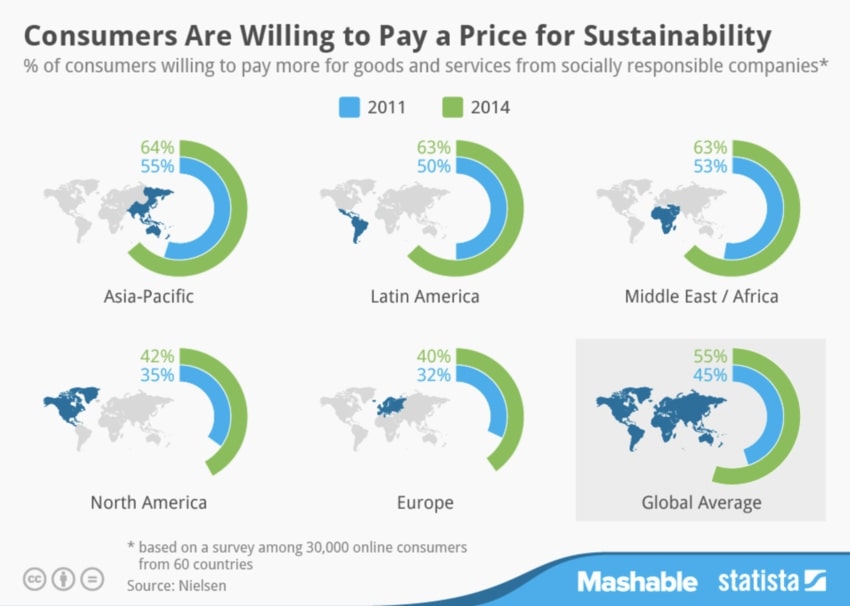
Choose eco-friendly materials. (Try to use recyclable or biodegradable materials, avoid plastics at all costs!)
Try to incorporate recycled materials into your designs. (Here’s a great example of that.)
Try to ‘upcycle’ old materials or garments into new designs. (Here are some helpful resources for learning about upcycling and zero-waste design.)
Design products with the recycling process in mind. (Products comprised of many different materials are often difficult to recycle.)
Design products to minimize ‘waste’ material during the cutting process.
Avoid catering for short-term trends; the more timeless the design, the longer the customer is likely to wear it!
Could offering custom designs encourage customers to hang on to their purchases for longer? (Creating an emotional attachment is key!)
2. Sourcing Materials Ethically
As mentioned above, it’s important to use eco-friendly materials, but that’s not always easy! Working out which materials are recyclable, biodegradable, ‘carbon-friendly’, and free from toxic chemicals can be very frustrating, but thankfully there’s some useful resources that can help you here:
Fabrics Database: A wonderful database that provides in-depth environmental information about all the main fabrics.
Textile Exchange: An international non-profit with loads of helpful textile-related info.
ITC Standards Map: A great tool for ensuring sustainable and ethical trade.
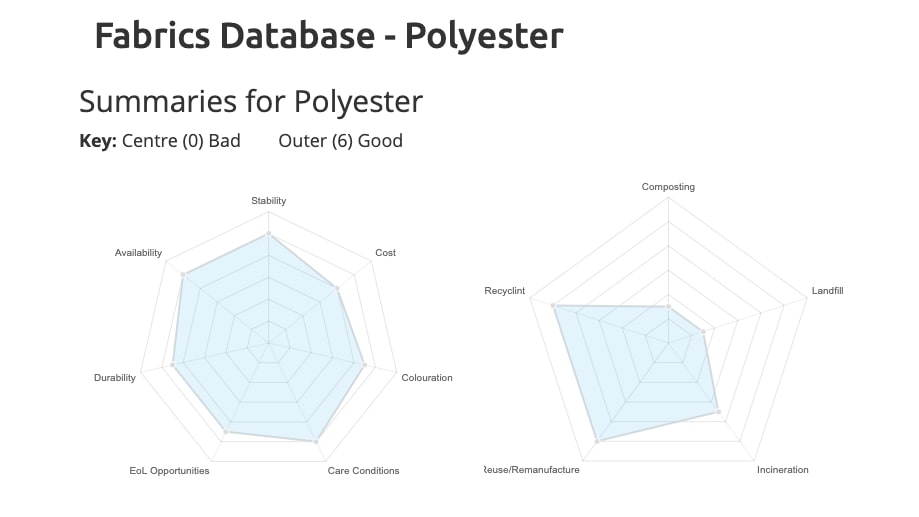
You can use these resources to find sustainable materials and source them ethically. A few things to keep in mind while searching might be:
Do the people who harvest the materials receive a fair price and acceptable working conditions?
Are the materials coming from a farm that practices regenerative agriculture? (This is a form of agriculture that improves the health of the land, and is essential for biodiversity and long term ecosystem health.)
How far do the materials have to travel? (The closer to home you source your materials, the lower the carbon footprint!)
It is possible to use materials that are kind to the planet and people as well, it’s just a matter of finding them. The resources above can help you with that. You could also consider using reclaimed fabrics and off-cuts, turning waste materials into limited editions, and using recycled materials.
3. ‘Fashioning’ an Efficient Production Process
Now you’ve got your planet-hugging materials sourced, it’s time to turn them into works of art. To do this with circularity in mind there are a number of important things to consider:
Ethical working conditions in factories. First of all, it’s important to make sure that all workers are fairly treated, because if they’re not, then everything else becomes kind of pointless. The resources provided in the previous section can help with this.
Nearshoring (Try producing as close to home as possible). If you’re outsourcing your production, choosing a country nearby will help reduce your carbon footprint.
Cutting out the carbon. Speaking of your carbon footprint, it’s absolutely essential that you do whatever you can to minimize your carbon emissions. You can do this by switching to renewable energy wherever possible, cutting down on transport, and investing in carbon offset projects like planting trees for every product sold. (Here’s a list of companies who do that.)
Avoid toxic chemicals and synthetic dyes. 17-20% of all water pollution comes from textile dyeing and treatment, so it’s important to eliminate any harmful chemicals involved. Natural dyes, neatly illustrated below, are a colorfully sustainable alternative!
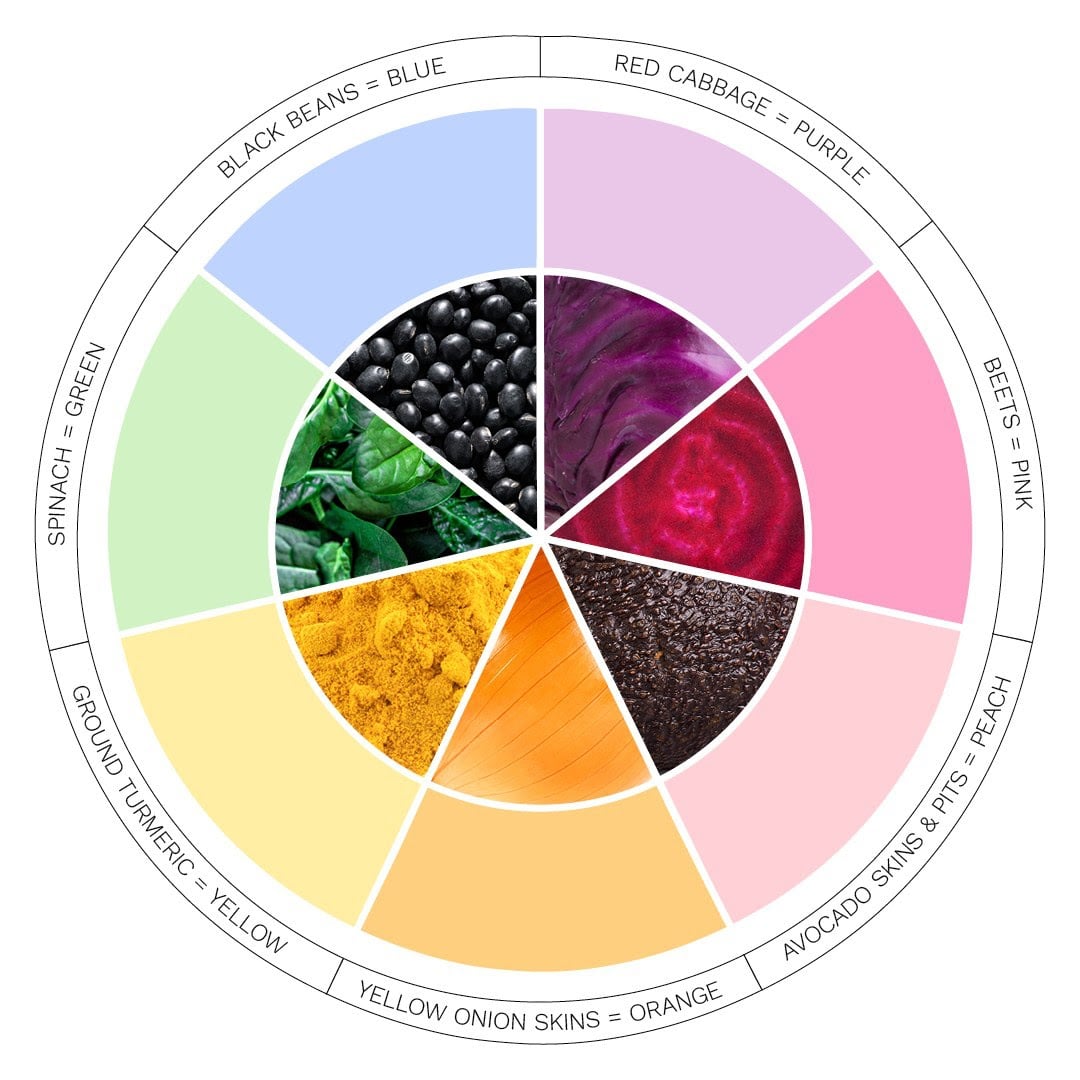
Reduce water consumption. Did you know that roughly 7,600 liters of water is used to make a pair of jeans? Minimizing water use will help the planet and can save money, and your choice of materials makes a big difference here. (Cotton for example is very water-intensive, but linen uses very little water.)
Handling your waste. Reuse and upcycle whatever ‘waste’ you can, and recycle or compost the rest. Anything you can’t dispose of safely you can send to companies like FabScrap or Terracycle, and they’ll recycle it for you!
4. Sustainable Distribution
Creating wonderful works of wearable art is no good if your customers never get to wear them, so obviously distribution is essential. Here’s how you can do it more sustainably.
Use alternative fuels? In the near future, electric vehicles and other fossil fuel alternatives will become more widely available. It’s always better to choose these options where possible.

Carbon offsetting. It’s possible to ‘offset’ your carbon emissions by donating to various climate initiatives. This may not be feasible when you’re just starting out, but it’s an effective way to reduce your carbon footprint as your business grows. If you do choose this option, it’s best to work with ‘Gold Standard’ certified initiatives, as you can be sure of their legitimacy and impact.
Eco-friendly packaging. 170kg of packaging waste was generated per person in the EU alone in 2016, so making it eco-friendly is essential. Minimize packaging wherever you can, utilize recycled materials as much as possible, and when you do need to use new packaging, maybe noissue can sort you out with some custom made, beautifully designed, super-sustainable options!
5. After the Sale: Closing the Circle
Achieving true circularity involves being responsible for your creations even after you’ve sold them. You’ll need to make sure that the items you sell don’t end up harming the planet once your customers are done using them. There are various ways you can do this:
Repairs. Offer value-for-money repairs (or free), and provide information for customers about how they can repair and look after their purchases.
Repurpose and sell secondhand. Incentivize customers to return garments after use. You can then repair and re-sell these items, and upcycle any unusable items into new items. (The incentive for customers to return the clothes could be a price percentage off their next purchase.)
Recycling. Provide clear information to customers about the materials present in each item and how to properly recycle them. You could also offer to recycle used items for your customers.
These are all effective ways to minimize the environmental impact your products have post-use, and combined with circular design practices it’s possible to completely close the production circle using these methods. Going a step further, you could even think about building your business model specifically with circularity in mind.
Rental. Offering rental services ensures that each garment gets maximum use, and you can then recycle the garments when they’re worn out.
Subscription service. By having your customers pay a monthly fee for access to a range of garments, the users get all the variety of a jam-packed wardrobe without having to purchase each item, meaning fewer items need to be produced. Your customers can share, kind of like a library for clothes!
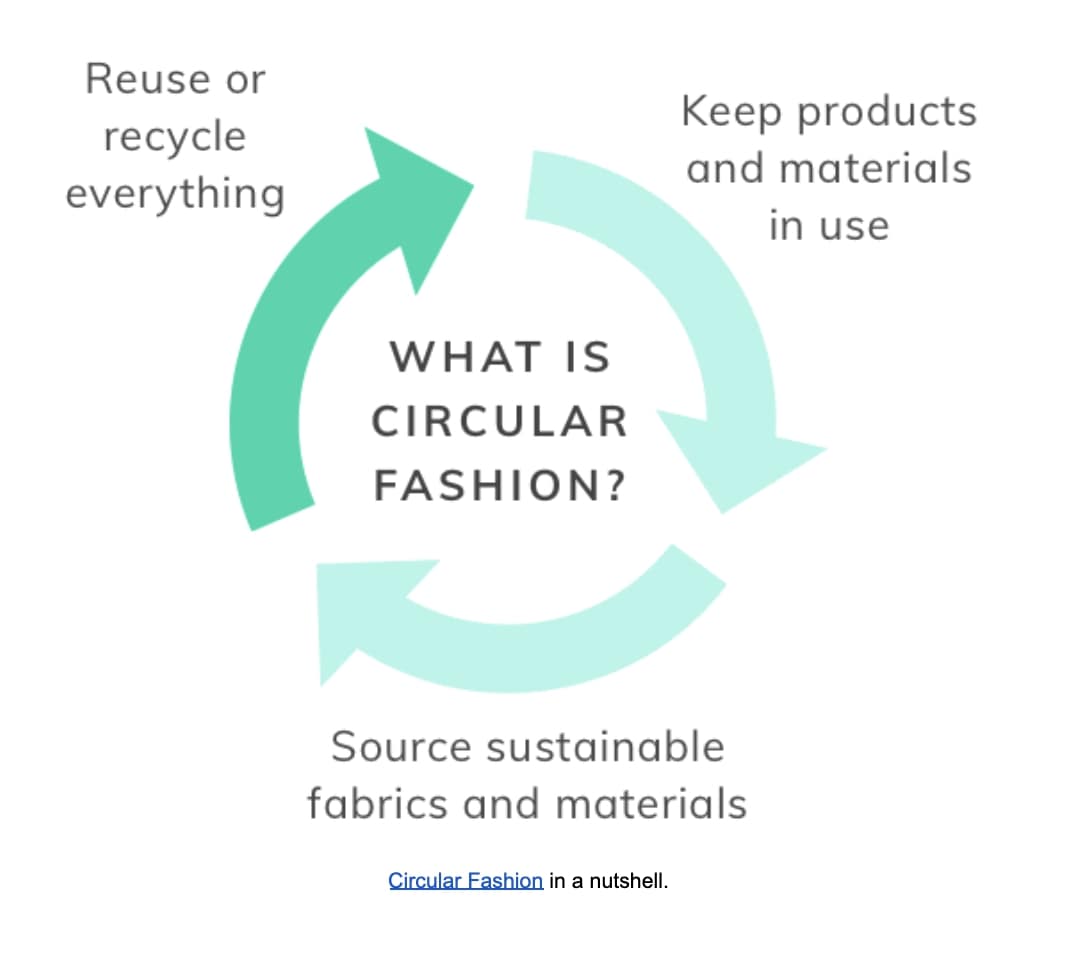
There is no ‘one-size-fits-all’ solution for achieving circularity in your fashion business, but by ‘stitching’ together some of the ideas discussed in this article, it’s very possible.
We hope you’ve learned some useful tips here for making every step of your production cycle more circular, and here’s one more helpful tool for measuring sustainability performance throughout your business.
And if the future of fashion really is circular, we wish you the best of luck for being ahead of the curve!
For more about sustainable fashion, check out our blog!

